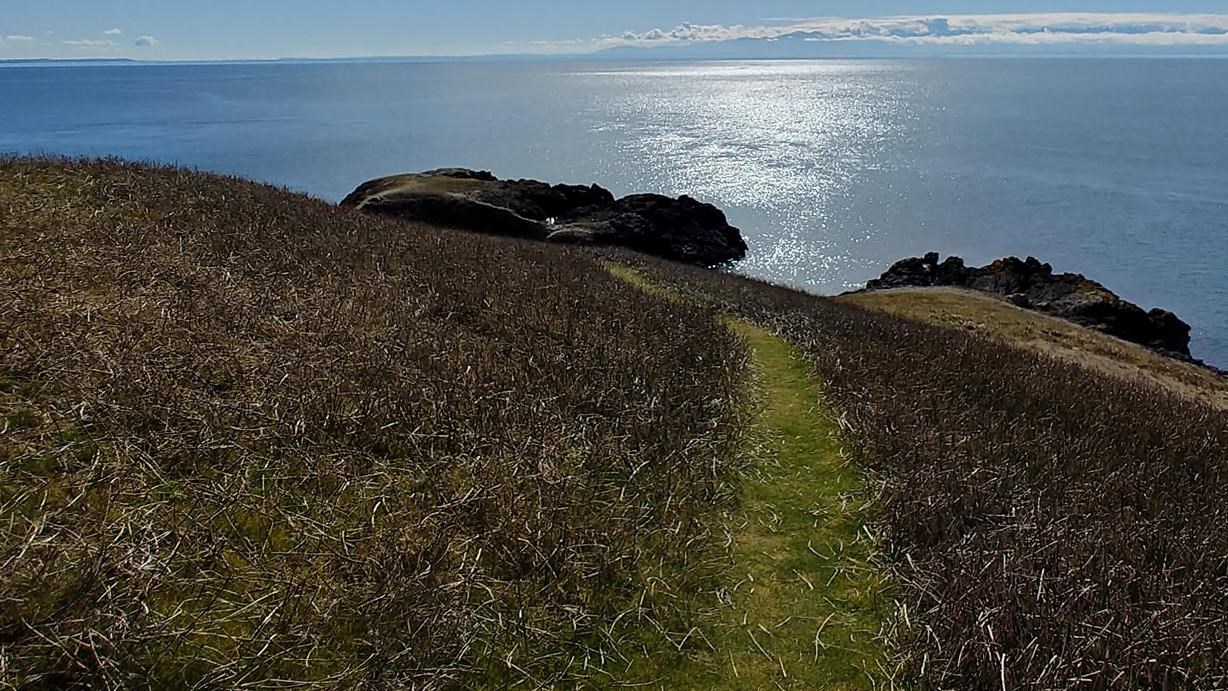Last updated: August 9, 2022
Place
Belle Vue Sheep Farm

NPS
Quick Facts
Location:
Friday Harbor, WA
Significance:
First Euro-American Settlement on San Juan ISland
Amenities
3 listed
Historical/Interpretive Information/Exhibits, Information, Scenic View/Photo Spot
On December 15, 1853, a group of European, Hawaiian, and Native American men (inand 1,639 sheep and other farm animals landed on San Juan Island. Led by local manager Charles Griffin, their goal was to transform San Juan Island into a massive sheep farm for the Hudson’s Bay Company. 6 years later, San Juan Island was home to 4500 sheep, 40 cattle, 5 yokes of oxen, 40 hogs (including one soon-to-be-famous Berkshire Boar), and 35 horses. All of these animals were supported by hay, oats, and potatoes raised on island and a 40-60 acre vegetable farm and accompanying orchards fed the Hudson’s Bay Company’s workers like Po`alima (Peter Friday) the town of Friday Harbor's namesake. By any measure, Belle Vue Sheep Farm was a success.
The initial site of Belle Vue Sheep Farm was the American Camp prairie. Hudson's Bay Chief Facter, James Douglas described the site he chose as being along “the banks of a rivulet, in the centre of a dry elevated sheep run containing about 1500 acres of clear prairie land, besides a large extent of brush land. This land yields excellent grass and will support from 2000 to 3000 head of sheep.” This was a large coastal prairie which had been carefully managed to support game populations, camas meadows, and berry fields by the Coast Salish people who had inhabited San Juan Island since time immemorial.
As the sheep population grew, the Belle Vue Sheep Farm hired Native American laborers to build the Cowichan Road which connected their home prairie to other grazing land throughout San Juan Island. In 1858 and 1859, American settlers who did not recognize Great Britain and by extent the Hudson’s Bay Company’s ownership of San Juan Island, began to build homesteads, planting crops and grazing animals on Belle Vue Sheep Farm’s prairies. In 1859, the conflict between the Belle Vue Sheep Farm and American homesteaders erupted into the Pig War.
When American forces landed in the summer of 1859, they quickly saw the advantage of the Belle Vue Sheep Farm’s location and built American Camp on the Home Prairie, where they further impacted sheep raising operations. The joint occupation of San Juan Island by British and American forces provided new opportunities on the island, draining away Belle Vue Sheep Farm’s workforce and by mid-1860 the once profitable Belle Vue Sheep Farm was a money losing operation. In 1862, Robert Firth replaced Charles Griffin as Belle Vue's manager; by 1865 Firth was leasing the farm from the Hudson's Bay Company. After the Joint Occupation ended in 1872, Firth homesteaded on the land, turning Belle Vue Sheep Farm's home prairie into his personal farm.
The initial site of Belle Vue Sheep Farm was the American Camp prairie. Hudson's Bay Chief Facter, James Douglas described the site he chose as being along “the banks of a rivulet, in the centre of a dry elevated sheep run containing about 1500 acres of clear prairie land, besides a large extent of brush land. This land yields excellent grass and will support from 2000 to 3000 head of sheep.” This was a large coastal prairie which had been carefully managed to support game populations, camas meadows, and berry fields by the Coast Salish people who had inhabited San Juan Island since time immemorial.
As the sheep population grew, the Belle Vue Sheep Farm hired Native American laborers to build the Cowichan Road which connected their home prairie to other grazing land throughout San Juan Island. In 1858 and 1859, American settlers who did not recognize Great Britain and by extent the Hudson’s Bay Company’s ownership of San Juan Island, began to build homesteads, planting crops and grazing animals on Belle Vue Sheep Farm’s prairies. In 1859, the conflict between the Belle Vue Sheep Farm and American homesteaders erupted into the Pig War.
When American forces landed in the summer of 1859, they quickly saw the advantage of the Belle Vue Sheep Farm’s location and built American Camp on the Home Prairie, where they further impacted sheep raising operations. The joint occupation of San Juan Island by British and American forces provided new opportunities on the island, draining away Belle Vue Sheep Farm’s workforce and by mid-1860 the once profitable Belle Vue Sheep Farm was a money losing operation. In 1862, Robert Firth replaced Charles Griffin as Belle Vue's manager; by 1865 Firth was leasing the farm from the Hudson's Bay Company. After the Joint Occupation ended in 1872, Firth homesteaded on the land, turning Belle Vue Sheep Farm's home prairie into his personal farm.
